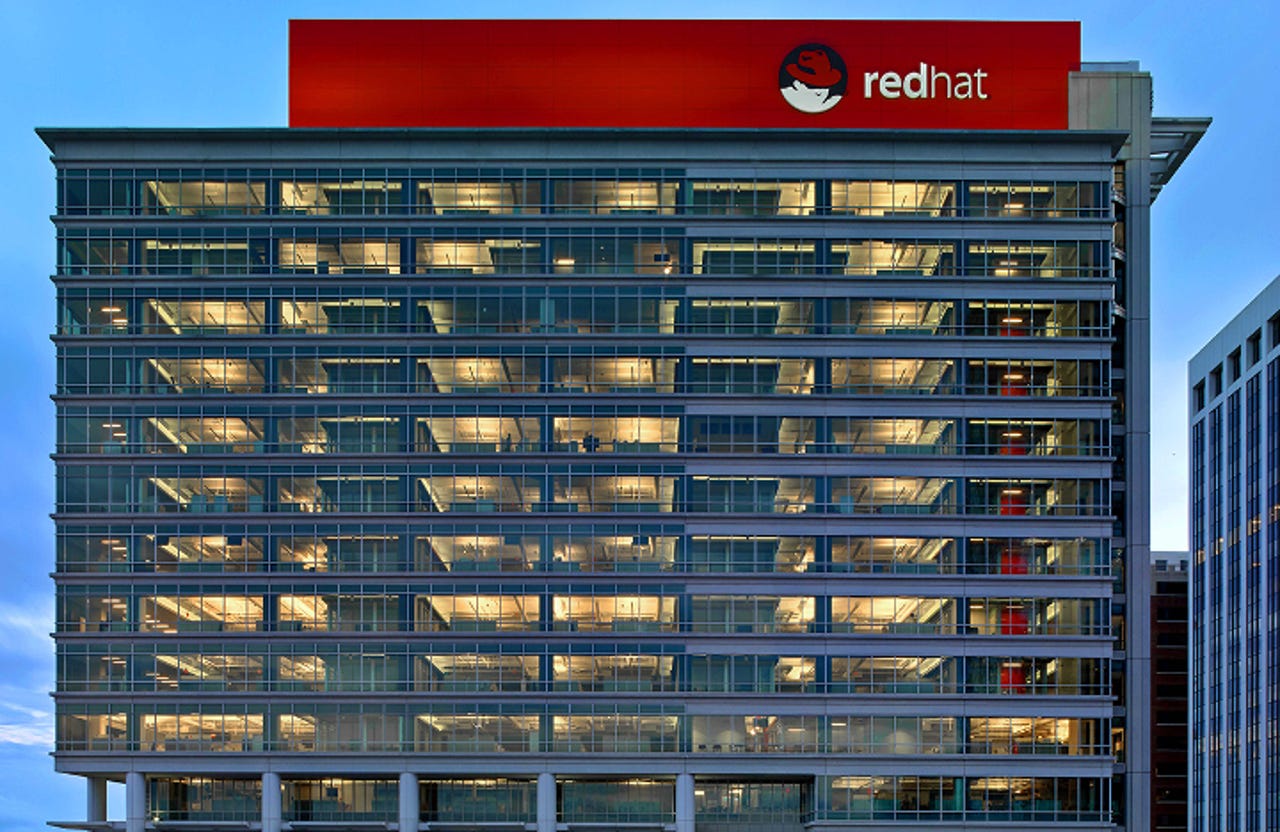Red Hat doubles down on OpenStack

You know Red Hat as the world's leading Linux company. Fair enough. What Red Hat wants to be known as these days is the world's leading private cloud company. To make that happen, Red Hat has embraced the open-source OpenStack infrastructure-as-a-service (IaaS) cloud.

At Red Hat's headquarters, the company has decided to move from being a Linux giant to a cloud power.
Red Hat's plan has run into some difficulty. Canonical's Ubuntu is the leading OpenStack cloud operating system. Other top technology companies, such as IBM, are also throwing their hats into the OpenStack ring, while new dedicated OpenStack companies, such as Mirantis, are making inroads.
That isn't slowing down Red Hat for one moment. Days before the OpenStack Summit, Red Hat announced the general availability of Red Hat Cloud Suite and Red Hat OpenStack Platform (RHOP) 8, Together, Red Hat now offers a complete, integrated hybrid-cloud stack with a container application platform-as-a-service (PaaS), OpenShift; massively scalable IaaS, RHOP 8; and unified management tools, Red Hat CloudForms. Customers can either use these individually or as a single, easy-to-deploy cloud with Red Hat Cloud Suite.
Forming the backbone of Red Hat's hybrid cloud offerings is RHOP 8. This is based on the OpenStack Liberty release, which came out last fall. The latest OpenStack release, Mitaka, has been out for only days and it's not being deployed yet in commercial OpenStack distribution.
RHOP 8 integrates the proven foundation of Red Hat Enterprise Linux (RHEL) with OpenStack technology to form a production-ready cloud platform. RHOP 8 now natively includes:
- Automated upgrades and updates, easily upgrade major point releases and minor updates. A component of the RHOP director, it automatically performs the necessary system-wide updates to both the core OpenStack services, as well as the director tool itself, helping to deliver a healthy and stable OpenStack cloud while minimizing downtime.
- Infrastructure and workload management included; use Red Hat CloudForms for lifecycle and operational management over OpenStack infrastructure and workloads. CloudForms can manage Linux and Windows workloads running on top of OpenStack, including lifecycle management, usage monitoring and reporting, multi-node orchestration, and governance and policy-based access control.
- Software-defined storage. Red Hat Ceph Storage, Red Hat's massively scalable, software-defined storage solution, is now included with Red Hat OpenStack Platform. This offers an initial 64 terabytes of highly flexible object and block storage that's big enough for most Big Data projects.
Cloud
Red Hat is also trying hard with this release to gain telecom company customers. Telecommunications companies, which now come to 10 percent of all OpenStack production deployments, are rapidly adopting OpenStack. RHOP 8 adds several new and critical tech preview features focused on improving network virtualization functions. With this release there is more assured predictable latency with real-time KVM; improved network I/O performance with Data Plane Development Kit (DPDK) accelerated Open vSwitch; and an OpenDaylight software-defined network (SDN) plugin.
Using this for a foundation, Red Hat wants Red Hat Cloud Suite to give customers a one-stop private cloud solution. Besides RHOP 8, the Cloud Suite combines Red Hat's container application platform OpenShift Enterprise with a common management framework Red Hat CloudForms.
Additional Red Hat Cloud Suite products include:
- A unified management experience, spanning operations and lifecycle management, self-service, and infrastructure monitoring. These powerful management tools provided by Red Hat Satellite cover rolling updates for deployment, configuration, patch, and subscription management. A new self-service catalog extends to cover the lifecycle, operation, and financial management of services that customers deploy.
- Newly-added infrastructure monitoring with risk management and analytics -- proactively collecting infrastructure analytics that enable customers to manage technical risks before they impact operations. Red Hat Insights, a newly-released operations management service, provides these monitoring capabilities spanning Red Hat OpenStack Platform, Red Hat CloudForms, and Red Hat Satellite.
- KVM-based virtualization platform with the newly updated Red Hat Enterprise Virtualization, offering simplified virtual machine-to-virtual machine migrations.
- Open, massively scalable, software-defined storage with the inclusion of Red Hat Ceph Storage as part of RHOP 8.
Put this all together and I see Red Hat taking a very familiar path. Like DEC and IBM before them, Red Hat wants to offer customers an all-in-one software stack for all their their needs. Since setting up a private cloud is never an easy-task, I suspect this approach will find many customers.
The only thing that's missing is a hardware partner. Or is it?
On the same day Red Hat announced RHOP 8, Dell announced that it was releasing its own RHOP 8 integrated open cloud solution: Dell Red Hat OpenStack Cloud Version 5.0. This features:
- New flexible reference architecture which provides validated core architecture detailing optimized compute, storage, and networking designs, with a portfolio of innovative validated extensions.
- Deployment automation across all layers, hardware and software, integrated with Red Hat OSP Director.
- Seamless in place OpenStack version upgrades (Liberty going forward updates).
- Dell PowerEdge R630/R730xd 13th generation servers powered with the latest generation Intel Xeon E5-2600V4 (Broadwell) processors.
- Guest high availability to minimize downtime in the event of outage.
- Host live migration to move VMs from one host to another without downtime.
Red Hat and Dell face strong private cloud competition, but with these moves they show they plan on winning.
Related Stories: